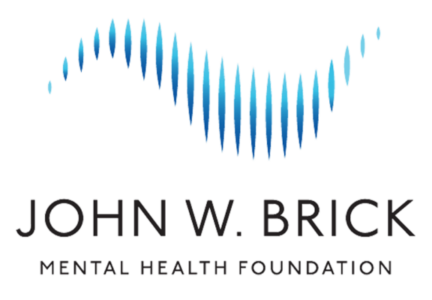Wellbeing is becoming a driver of brand performance, workforce engagement, and social and environmental change—and is one of the central challenges and opportunities of leadership today. Within work settings, applying the science and practices of wellbeing is at the top of leadership agendas to enhance the employee experience and strengthen the collaboration, adaptability, and effectiveness of people and teams, networks, and entire organizations.
This wellbeing leadership agenda is even more crucial for organizations in the health and wellbeing industry. Why? Because this industry is on the frontline of assisting with the mental, physical, and social toll that individuals, organizations, and communities often experience due to the escalating changes and complexities in every corner of our world.
“Leading in the Health & Wellbeing Industry 2023” is the first time for a study to ask:
As leaders of health and wellbeing industries, are we thriving personally? Are we advancing wellbeing through how we lead?
Everyone can be a leader.
What Do We Mean by “Leadership”?
In our contemporary work world where hierarchies and silos are beginning to give way to networks of collaboration that are more democratized, adaptive, and inclusive, we define leadership as a stance a person takes to actively steward the work conditions where all people can be effective and thrive. Who’s leading and who’s following can vary over the course of a day, a project, or a major change initiative. This means everyone can be a leader, in management and non-management roles alike.
Leading in the Health & Wellbeing Industry 2023 provides leaders and human capital professionals a first-ever look at wellbeing leadership across the health and wellbeing industry, defined by three sectors.
GLOBAL WELLNESS ECONOMY
HEALTHCARE
HUMAN POTENTIAL & DEVELOPMENT
Described by the Global Wellness Institute as a $4.5 trillion market combining 11 categories: wellness tourism, physical activity, workplace wellness, healthy eating and weight loss, preventive and personalized medicine and public health, personal care, beauty and anti-aging, mental wellness, wellness real estate, traditional and complementary medicine, spa, and thermal/mineral springs.
A $11.9 Trillion global market, according to Research & Markets, which includes organizations that deliver medical services, manufacture, or sell medical devices or drugs, provide health insurance, or otherwise facilitate healthcare for patients.
Those professions and organizations, such as leadership development, professional training, organization development, and education, that advance the wellbeing and stress resilience, learning, and growth of people.
To find out if we are walking our talk, Wisdom Works surveyed 841 leaders spanning 71 countries across every region of the world who are impacting a reported 19 million people.
Who participated in the study?
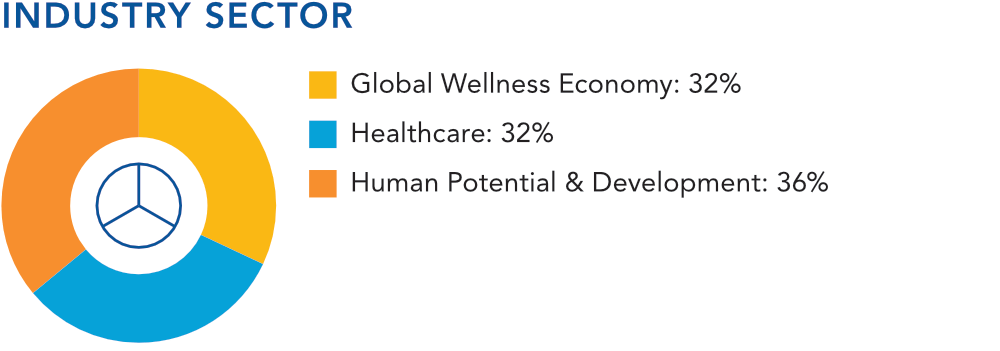
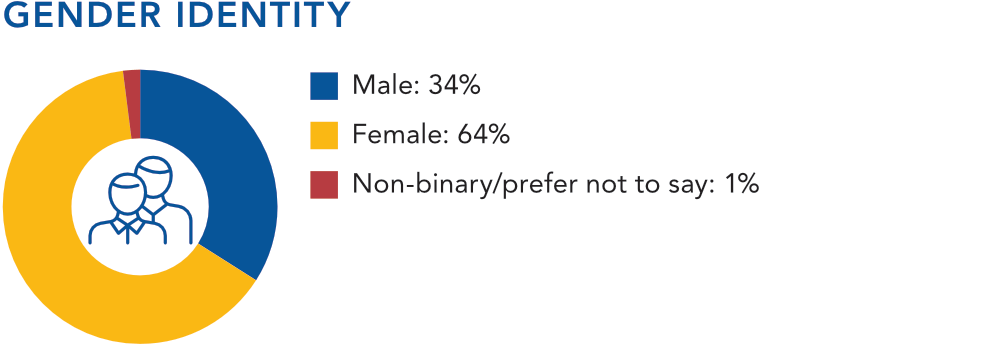
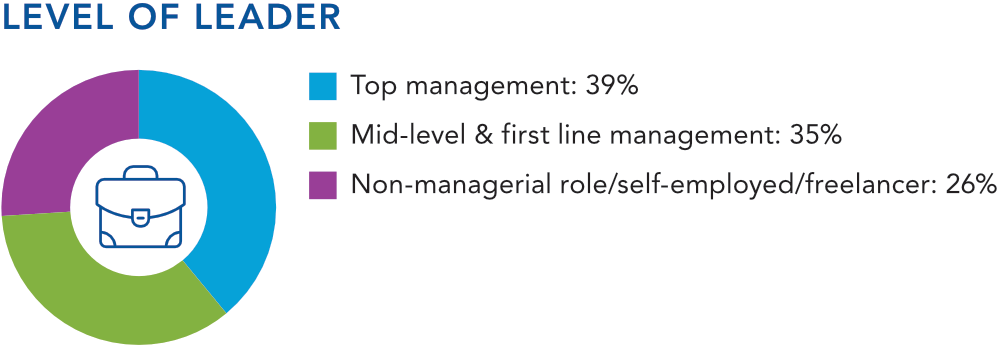
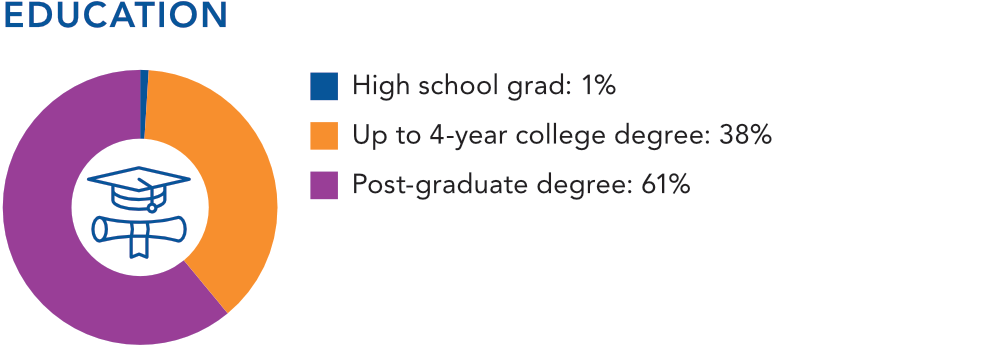
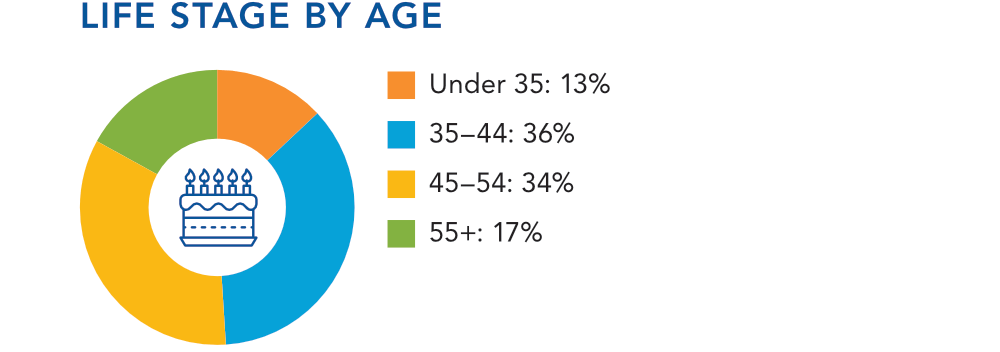
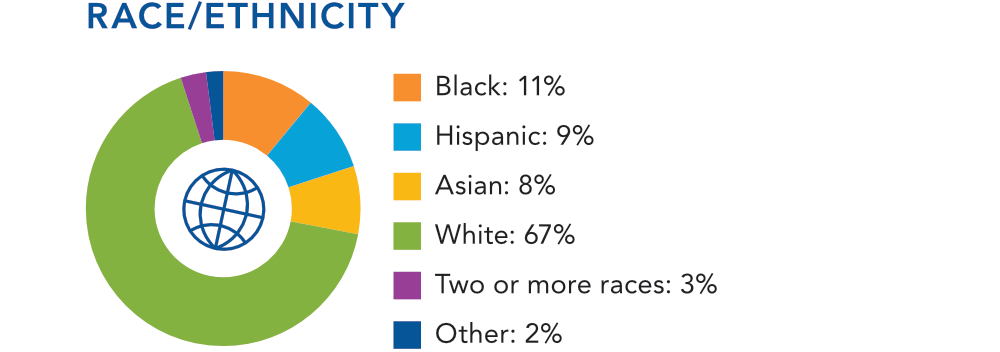
Why Do This Study?
Recent research shows leaders globally are struggling both with their personal wellbeing and leading wellbeing for their teams and organizations. Insights from Gallup emphasize that people who are engaged at work but not thriving in their lives overall have a higher likelihood of burnout, daily stress, and worry than people who are thriving.
Yet, the most impactful wellbeing efforts don’t begin with the individual employee. Leadership has an outsized impact on people at work—recent Gallup research suggests that 70% of an employee’s work experience is due to their leader. Creating work environments where people can flourish, bring their best to work, and leave work more capable and well than when they arrived requires leaders who lead and live wellbeing. This has never been more important for industry sectors that promote the advancement of health and wellbeing as their core mission and value proposition.
What Did We Measure?
Health and wellbeing industry leaders answered 133 questions to examine their experience of the organization, everyday stressors, and two areas, psychological wellbeing and leadership impact, which combine into what we call wellbeing leadership. Psychological wellbeing includes 16 psychometrics that provide a window into a leader’s perceived internal resourcefulness to meet their lifework demands with a high quality of life, competence, and growth. The three psychometrics of leadership impact shed light on the leaders’ reported ability to amplify thriving for people at work.
EXPERIENCE OF THE ORGANIZATION
- Organizational Change
- Job Autonomy
- Work Culture/Environment
EVERYDAY STRESSORS
- Work Factors: Coworkers, Management, and the Job Itself
- Family Factors: Spouse/Life Partner/Significant Other, Children, and Relatives (i.e., Parents, Siblings)
- Other Factors: Social Life & Friends, Personal Finances, Physical Health, Spirituality/Faith
WELLBEING PSYCHOMETRICS
- Today & Tomorrow: The extent the leader perceives themselves as thriving today, as well as their optimism about thriving in the next five years.
- Flourishing: The extent to which the leader perceives meaning and purpose in their life, as well as an interest, engagement, and competence in their daily activities. Flourishing also address the extent to which the leader perceives their social relationships are supportive and rewarding, they are respected by others, and they contribute to others’ happiness.
- Resilience: The extent to which the leader perceives they can bounce back or recover from the daily stress and difficulties which are an inherent part of life and work, restoring their wellbeing when they get off track.
- Eating as Fuel: The extent to which the leader proactively uses eating habits to positively manage their stress and energy, plus perform at their best.
- Moving as Fuel: The extent to which the leader proactively uses physical activity to positively manage their stress and energy, plus perform at their best.
- Resting as Fuel: The extent to which the leader proactively uses sleep and rest to positively manage their stress and energy, plus perform at their best.
- Breathing as Fuel: The extent to which the leader proactively uses the breath to positively manage their stress and energy, plus perform at their best.
- Engagement at Work: The extent to which the leader gets immersed in their work, feels happy and inspired by work, and experiences inherent satisfaction and pleasure in work itself.
- Self-Esteem at Work: The extent to which the leader perceives themselves as important, meaningful, worthwhile, effective, and valuable to the organization—an internal sense that they make a positive difference at work.
- Mindfulness: The extent to which the leader pays attention to the present moment without judging it as good or bad and acts with awareness rather than reactivity.
- Appreciation & Awe: The extent to which the leader experiences a sense of beauty, curiosity, and enchantment in their daily life.
- Seeking New Perspectives: The extent to which the leader actively looks for opportunities to expand their viewpoints and beliefs.
- Learning & Growing: The extent to which the leader uses the constant changes and “ups and downs” of life to evolve as a human being.
- Vision & Purpose: The extent to which the leader has a meaningful purpose and personal vision to direct their life and leadership.
- Wholeness: The extent to which the leader experiences a sense of personal integration and internal continuity, even with conflicting or competing facets of life and work.
- Emotional Capacity: The extent to which the leader brings equanimity and lightness to their responsibilities.
LEADERSHIP IMPACT PSYCHOMETRICS
- Energizing Others: The extent to which the leaders perceive that people are invigorated and energized through interacting with them.
- Maximizing Others: The extent to which the leader perceives that people gain clarity, effectiveness, meaningful impact, and growth through interacting with them.
- Cultivating Care in Others: The extent to which the leader perceives that people are more apt to express prosocial behaviors, such as gratitude and collaboration, through interacting with them.
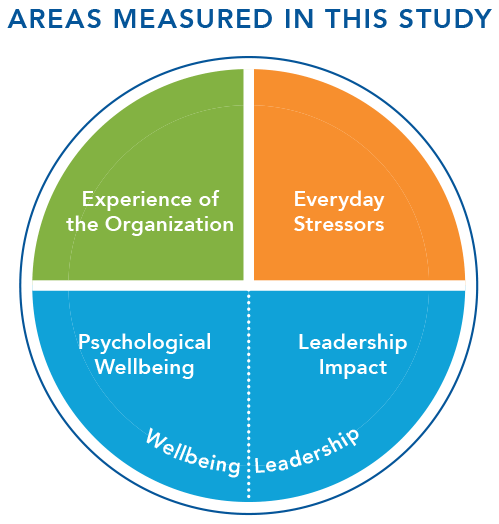
"We cannot control what happens in the global environment. Yet how we respond—how we create our organizations and teams and lives and this industry—largely depends on us. Why not create it from a foundation of high wellbeing?"
—Renee Moorefield, CEO, Wisdom Works Group
Overall, nine key findings emerged from this study revealing considerable potential for health and wellbeing industry leaders to enhance wellbeing leadership for themselves and the people and organizations they serve. Role modeling—or authentically walking the wellbeing talk—is crucial, especially in an industry that the rest of the world looks to for health and wellbeing solutions and advice.
Leading in the Health & Wellbeing Industry 2023 uncovers that leaders in this industry are collectively reporting that they are not as internally well-resourced as they could be to handle the complexities and challenges they face. With leaders as a linchpin for people’s experience at work, this study brings to light the need for integrating the science and practices of wellbeing into leader development as a strategy for improving leadership, work culture, and industry impact.

Higher Leader Wellbeing Links to Higher Leadership Impact
Across the health and wellbeing industry, this study found the psychological wellbeing of leaders strongly correlated with the impact they reported. Leaders who scored high in their mental and emotional wellbeing also reported greater abilities to energize others, maximize the effectiveness and growth of others, and cultivate a positive, collaborative work environment.

Leaders Across the Industry Show Potential for Growth
While this study generally found higher leader wellbeing linked to higher leadership impact, leaders across the health and wellbeing industry generally reported room for improving their wellbeing leadership. Overall, health and wellbeing industry leaders perceived that they were not as internally well-resourced as they could be to handle the complexities and challenges of their life and work.

Human Potential & Development Leaders Report Lowest Wellbeing Leadership and Highest Stress
Wellbeing leadership declined when looking closely at the Human Potential & Development sector. While leaders in this sector were 35% of the study sample, they represented a disproportionate 42% of the low wellbeing leadership category and 46% of the high stress category.

Middle- and First-Line Managers Show Need for Support
Across the health and wellbeing industry, first- and mid-level managers reported lower wellbeing leadership as compared to other leadership levels. As this pool of leaders are the future of the industry, this finding highlights a critical opportunity for retaining and developing top talent by empowering middle-and first-line management to prioritize wellbeing.

Wellbeing Leadership for Top Management Depends on Industry Sector
When diving into the three sectors of the health and wellbeing industry, reports of wellbeing leadership for top management differed considerably. Leaders in the Global Wellness Economy sector scored higher than those in Healthcare and Human Potential & Development.

The Experience of Work Differs Across Level of Leader
When compared to middle- and first-line management, top management and non-managerial leaders across the health and wellbeing industry perceived greater Job Autonomy and perceived their Work Culture as more organic and participative.

Wellbeing Leadership Varies for Gender Identity
When it comes to gender identity, leaders across the health and wellbeing industry showed no real differences in their overall wellbeing leadership. A deeper analysis of the industry by sector, however, told a different story.

Female Leaders Show Slightly Higher Stress than Male Leaders
Leadership research has frequently shown burnout, stress, and exhaustion affecting women more than men. This study of leaders across the health and wellbeing industry is no different. For each health and wellbeing industry sector, a higher proportion of women consistently scored in the high stress category compared to their male counterparts.

Higher Wellbeing Leadership Is Linked with Age
Across the health and wellbeing industry, wellbeing leadership generally increased over a leader’s life span while several stress factors decreased with age.
Walking the Talk
- How do the findings reflect you as a leader?
- How could you enhance your leadership impact by elevating your wellbeing?
- How do the findings reflect leaders across your organization?
- How could you develop the capacity of your leaders to cultivate environments where people thrive?
What Does This Mean for You as a Leader?
In today’s organizations, effective leadership is an inside-out job. It’s a stance you take to actively steward work conditions where all people can be effective, grow, and thrive. As a leader in the health and wellbeing industry, you cannot control what happens in the global environment. Yet, how you respond—how you lead your organization, your team, and your life—largely depends on you.
Findings from Leading in the Health & Wellbeing Industry 2023 reveal that leaders across the industry can increase their ability to face growing leadership complexities and demands by strengthening their inner wellbeing. Plus, these leaders can proactively reinforce thriving work cultures. Since this industry is the custodian for the health and wellbeing of people and societies globally, we believe a strategic focus on wellbeing-driven leadership is not optional for the industry’s business and social outcomes.
Integrating wellbeing into leadership impact isn’t a sprint, nor is it an event, program, or fad. It is a marathon requiring a dedicated commitment to real transformation—a transformation that can begin right where you are.
We Hope This Research Inspires New Paths of Inquiry
At Wisdom Works, we are committed to research that advances wellbeing as a path to effective leadership around the world. Although Leading in the Health & Wellbeing Industry 2023 has focused on one industry, we hope its insights contribute to new paths of inquiry benefiting all industries.
We understand that this research is, by nature, incomplete. As a first-ever study of leaders across the health and wellbeing industry, these early results draw from a population heavily focused on North America, the United Kingdom, and Europe. Plus, since leaders volunteered to take our assessment of wellbeing leadership, we assume leaders in this study may be more interested than the average leader in advancing wellbeing personally and within their organizations. This may mean the findings from this study are better than what we’d find if we randomly assessed leaders across the health and wellbeing industry.
To use content or findings from this report, please cite Leading in the Health & Wellbeing Industry 2023, Wisdom Works Group, Inc., or contact us for permission.
Research Partners
Wisdom Works is dedicated to bringing the science of wellbeing to life for leaders, work cultures, and brands through its services, programs, content, and research. We are grateful to these partners for expanding our research efforts.


